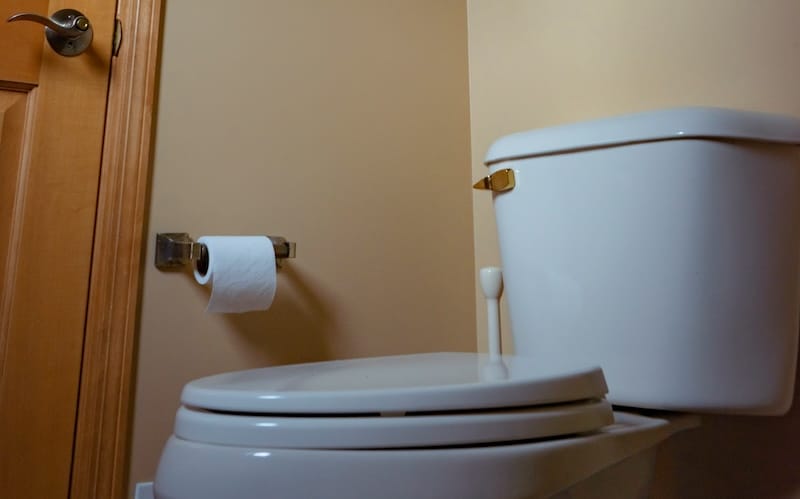Southampton Uni law student Akarsshaa Bhargavaa examines the interplay of history, culture and legal norms

In the shadowy corridors of Scottish legal lore, there exists an urban myth: if a stranger knocks on your door in Scotland and pleads for the use of your toilet, you are bound by law to grant them access. While this may sound absurd, it is rooted in historical customs, sparking debates about privacy, hospitality, and its boundaries, especially for legal obligations.
This journal explores the historical origins, legal basis, and contemporary implications of this unique law. By examining ancient hospitality traditions, contrasting common law with statutory law, and considering the cultural context, it sheds light on a quirk of Scottish legal history.
Historical context and legal basis
Scotland’s legal landscape is rich with common law—a tapestry woven from centuries old customs and precedents. The historic roots of this particular and peculiar Scottish law stems from the ancient tradition of hospitality; something which is deeply engrained and integral within Scottish culture.
This began during a time wherein long, arduous travels occurred frequently, although public facilities were scarce. This custom provided basic amenities to travellers, becoming a moral and social obligation. The offer of a stranger’s toilet facilities was a practical extension of this tradition, ensuring travellers could relieve themselves without needing to rely on inadequate or non-existent public infrastructure. So, it seems evident why and how this law came to be .
While no specific parliamentary authorisation exists for the “toilet law”, it serves as an extension of this ancient common law. Common law, a system of law based on judicial decisions and customs rather than written statutes, plays a crucial role in preserving historical customs, unlike statutory law which is explicitly enacted through legislation. The absence of formal authorisation for the toilet law highlights tensions between tradition and modern legal frameworks, though illustrating the enduring influence of custom. The reluctance to codify these customs into statutory law may stem from a desire to preserve the flexibility and adaptability of common law, allowing it to organically evolve with societal changes. Though, its enforceability in current age is questioned: there exists no recent legal cases, emphasising this customs’ symbolic role over any remaining practical one.
Contemporary implications
Trespassing is defined as the unauthorised entry onto another person’s property. Under Scottish law, the rule allowing toilet use creates an ambiguity in trespassing laws, blurring the lines between acceptable social behaviour and legal rights. In contrast, English law maintains a clear distinction, strictly prohibiting unauthorised entry onto private property, illustrating the complexities of enforcing trespassing laws.
Homeowners may, then, be uncertain about their rights and obligations in Scottish law if we consider the ‘toilet rule’. They must balance their rights to privacy against their ‘duty’ to assist their fellow neighbours, while visitors could potentially exploit this rule to gain unauthorised access. Thus, concerns could be raised about the delicate balance between individual property rights and communal needs, here.
Want to write for the Legal Cheek Journal?
Find out moreEnglish law on the other hand, places a strong emphasis on property rights and the sanctity of private property. Trespassing laws in England are stringent, providing robust protection to property owners against unauthorised access. This sharply contrasts the more flexible Scottish common law approach per the use of toilet facilities by strangers. Courts, then, would grapple with interpreting the spirit of hospitality within a modern legal framework, if this ‘toilet law’ was argued before them.
English law v Scottish law
The English case of R (on the application of Ricketts) v Basildon Magistrates’ Court [2010] EWHC 2358, where the defendant was arrested and charged with theft for taking abandoned bags outside a charity shop, the charity shop was held to have retained ownership until the gift was completed (to the charity shop). This precedent upholds a strict enforcement of property rights in English law, emphasising the priority of property rights over public access and upholding public policy concerns. The implications of such cases are profound, underscoring tensions between individual property rights and public welfare.
The Scottish toilet law diverges from and almost contradicts English law. English law provides clear rules regarding ownership and property, allowing for stability due to certainty, but can be seen as too rigid lacking adaptability, questioning its role as effectively balancing both sides of the coin. The ‘toilet law’ can be seen as being flexible with community benefits, though there remain landowner concerns where a lack of clarity exists regarding reasonable access.
In Southwark LBC v Williams [1971] Ch 734, another English case, the court addressed issues of nuisance and tenant rights versus property rights. This judgment again reinforced the sanctity of private property, affirming that property owners have significant rights to control access and use of their property, ultimately highlighting the robust protection of property rights in English law. However, strict property laws can exacerbate social inequalities, particularly in urban areas where access to housing and public amenities is already constrained. This legal framework contrasts with the more communal approach observed in Scottish law, highlighting the diverse ways in which legal systems address the balance between individual rights and communal responsibilities.
It is clear that balancing private property rights and public needs is a complex legal and social challenge. Urban planning and public policy often grapple with similar issues, striving to create inclusive public spaces while respecting private property rights. In practice, the likelihood of homeowners permitting toilet use varies. Societal attitudes towards this custom in modern Scotland may be more accommodating in rural areas, where traditions of hospitality remain strong compared to urban areas. This highlights tensions between preserving historical traditions and adapting to modern societal norms where the Scottish toilet law within today’s context appears limited, especially considering the widespread availability of public restrooms.
Preserving historical laws while adapting to modern norms presents a delicate balance. This tension reflects broader societal debates about the value of tradition versus the need for contemporary legal frameworks that address current realities. Enforcing such an archaic law poses practical challenges wherein legal authorities and general society may now view it as being more symbolic than practical. Whilst preserving unique legal customs can strengthen cultural continuity, it must be balanced with the laws’ need to reflect modern societal values and concerns.
Beyond legalities, the toilet law reflects Scotland’s ethos of openness and community. It embodies the spirit of “Cèilidh”—a gathering where strangers become friends over shared stories and laughter. Some homeowners embrace the law, turning their toilets into quirky tourist attractions where some visitors revel in the novelty of using a stranger’s loo.
Conclusion
Scotland’s toilet law, though rarely enforced today, remains a testament to the interplay of history, culture, and legal norms. To contemplate the rights of homeowners, the obligations of hospitality, and the legacy of ancient practices, we recognise that even the most peculiar laws reveal profound insights into human behaviour. Balancing historical legal principles with modern societal norms is crucial. Preserving unique legal customs can offer cultural continuity and a sense of identity, but it must be weighed against the need for relevant and effective legal frameworks in contemporary society.
The broader implications for the preservation of legal traditions and cultural heritage are significant. This article raises questions for further research and discussion about the intersection of law, history, and contemporary society. Understanding how to maintain legal traditions while adapting to modern needs is essential for a balanced and cohesive legal system.
Akarsshaa Bhargavaa is a second year law student at The University of Southampton where she represents Legal Cheek as their Southampton ambassador. She aspires to be a commercial solicitor and has keen interests in corporate and IP law.

